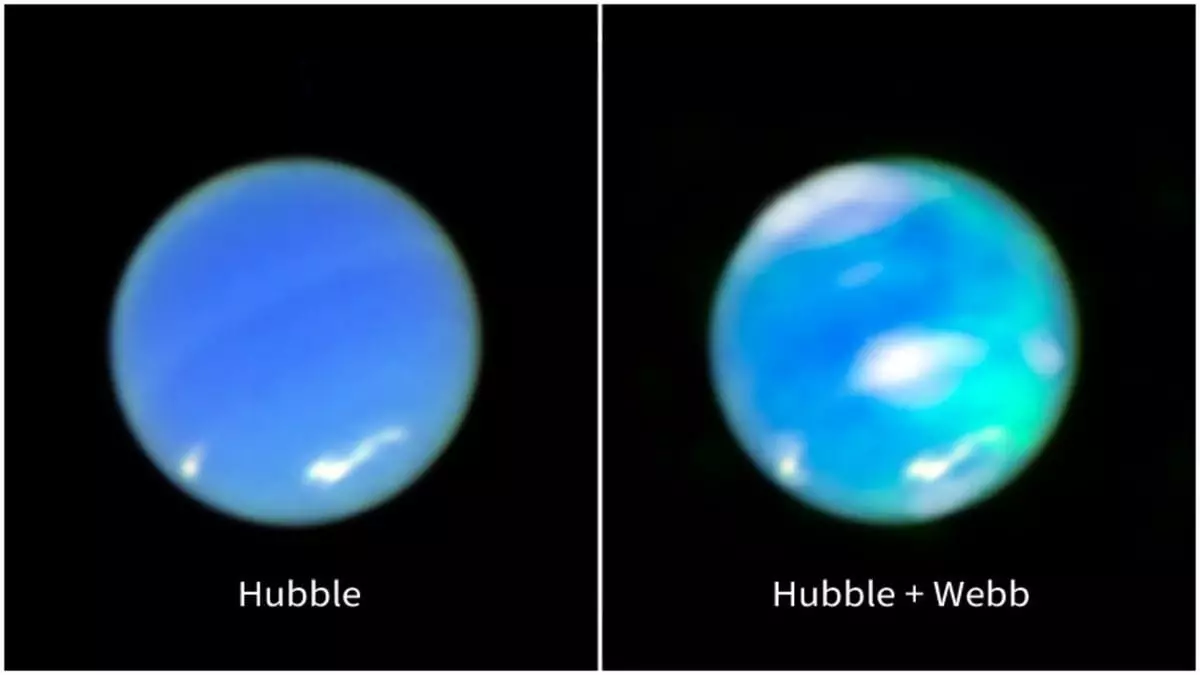For years, Neptune has remained a celestial enigma, with whispers of auroras tantalizing astronomers like distant music echoing through the cosmos. Thanks to the groundbreaking capabilities of the James Webb Space Telescope (JWST), we are now granted an unexpected glimpse into this mysterious world. The recent images of Neptune’s elusive auroras not only confirm their existence but also serve as a reminder of our limited understanding of the universe around us. Unlike anything we have seen on other planets, Neptune’s auroras defy conventions, appearing in bizarre locations across its atmosphere, challenging our preconceived notions of planetary science.
Auroras Like Never Before
The uniqueness of Neptune’s auroras is striking. While Earth, Jupiter, and Saturn boast auroras famously aligned with their magnetic poles, Neptune’s auroral displays appear in unpredictable locales—a testament to the planet’s tilted and offset magnetic field. This magnetic aberration raises intriguing questions: Is Neptune’s aurora a quirk of nature, or does it reveal deeper secrets about the dynamics of solar winds and planetary atmospheres? By venturing beyond the confines of established science, these celestial phenomena call for a reassessment of our understanding of atmospheric behavior across different planets. Henrik Melin’s excitement regarding the discovery brings forth an underlying truth—science is full of surprises that push the boundaries of our knowledge.
The Triumph of Technology
The previously inconceivable has become possible through the application of advanced technology, reinforcing the importance of innovation in scientific discovery. The JWST’s near-infrared capabilities afforded researchers the clarity needed to detect these magnificent auroras, leading to the identification of the trihydrogen cation (H3+)—an ion that has long signaled auroral activity on gas giants. It’s a firm reminder of how progress in instrumentation is essential for expanding our cosmic understanding. Heidi Hammel’s declaration of H3+’s significance is not merely scientific jargon; it’s an assurance that our pursuit of knowledge is relentless, relentlessly challenging the status quo of what we believe to be known.
The Temperature Conundrum
Further complicating the narrative is the dramatic cooling of Neptune’s upper atmosphere since the Voyager 2 flyby in 1989. The recent temperature readings, now sitting at less than half of what they were decades ago, introduce a host of new questions. Why has it cooled so significantly? What implications does this have for auroral visibility? These mysteries beckon us to investigate further and consider how changes in atmospheric conditions can impact not just visible phenomena, but potentially the very fate of planetary atmospheres themselves. The reduction in temperature may act as a paradox—making auroras harder to detect while reinforcing their value as indicators of planetary health.
A New Era of Exploration
The unveiling of Neptune’s auroras marks a pivotal moment in planetary science, pushing astronomers to rethink their approaches to outer planetary research. As Leigh Fletcher remarks, this achievement sets a new benchmark that could guide future explorations of gas giants. It encourages the scientific community to prioritize the deployment of infrared-sensitive instruments—tools essential for probing the secrets hidden in the atmospheres of our neighboring celestial bodies. This revelation turns the lens not just toward Neptune, but toward the cosmos more broadly, suggesting that there is much more waiting to be uncovered just beyond our reach.
In this era of discovery, we stand upon the precipice of an expanded understanding of the universe. Neptune’s auroras serve not just as a scientific marvel, but as a clarion call to embrace curiosity, investment in technology, and continual exploration. The secrets of the cosmos are not merely awaiting discovery; they are insisting that we venture deeper into the unknown.

Leave a Reply